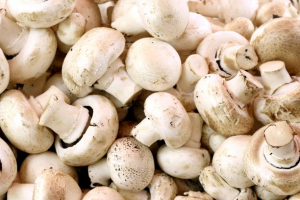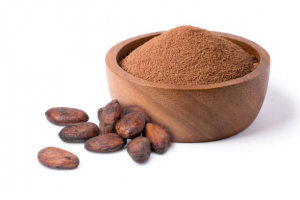Top 15 Best Types of Fish to Eat
Protein-rich fish contains omega 3, a good fatty acid that the body cannot make on its own. Omega 3 has been demonstrated to lower inflammation, lower the risk ... read more...of heart disease, and aid embryonic development in the womb. It also plays a crucial role in the brain. The American Heart Association advises including fish in the daily menu, according to Healthline. So, let's find out the list of the best types of fish to eat with Toplist!
-
Salmon is the common name for a variety of fish species belonging to the Salmonidae family. Salmon can be found along the North Atlantic (migratory families Salmo salar) and Pacific (approximately six families of the genus Oncorhynchus) coasts, as well as in North America's Great Lakes. Because of its nutritious benefits, salmon is widely produced in aquaculture in many regions of the world.
A great source of beneficial nutrients is salmon. You can better meet your nutritional needs and lower your chance of contracting several serious diseases by eating at least two servings of salmon every week. Salmon is also processed into a variety of tasty dishes. Regular fish consumption can enhance your quality of life. Salmon's high omega-3 fatty acid content will help lower blood cholesterol extremely effectively, according to research findings from the Harvard School of Public Health in the USA. Additionally, salmon consumption lowers the risk of high blood pressure and heart disease.
You should prefer to choose frozen salmon to minimize the risk of bacterial infection. If eating raw salmon, make sure it has been frozen at -35 degrees Celsius before and before eating, it must be defrosted properly. People should be careful not to eat raw salmon too often because they are likely to be infected with helminths, which can cause digestive disorders or food poisoning.
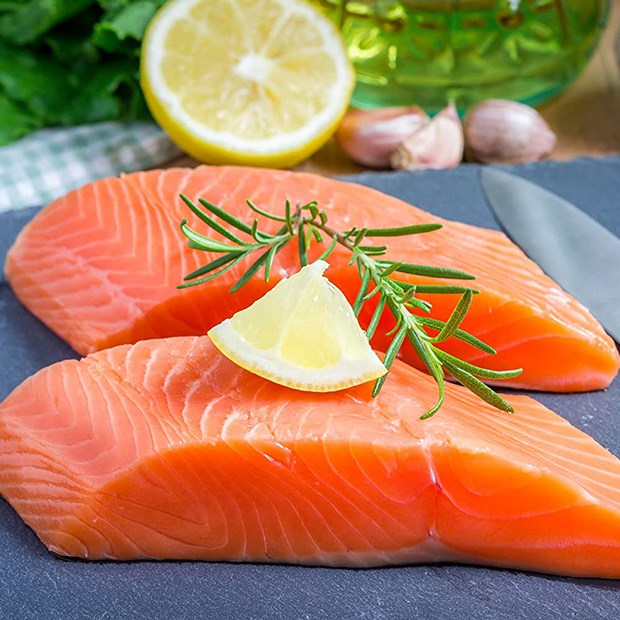
salmon 
salmon -
Sardinella is the scientific name for herring, which belongs to the Clupeidae family of fish, which also includes the sardine, hilsa sardine, menhaden, and shad families. The Atlantic, Indian, and Pacific oceans were mostly where the first herring was discovered in 1847. Herring lineages are now widely bred around the world. They turn into a food source that is rich in nutrients and promotes human growth.
Herring meat is highly solid, less fishy, and fattier than other meats, making it very meaty and delectable. Omega 3 fatty acids, a material that creates DHA to aid brain development, safeguard the heart, and lower blood pressure, are one of the essential nutritional components of herring. This fish is deserving of a spot on the list of nutritious meals to consume frequently. Red blood cell production is increased, inflammation is reduced, the danger of metabolic syndrome is decreased, healthy bones are encouraged, and the nervous system is nourished by herring.
A large number of healthy nutrients can be found in herring meat. They are therefore frequently employed in the preparation of delectable dishes and useful foods. However, in addition to having positive benefits for the body, it can also cause potentially severe symptoms when used improperly and at the recommended dosage. You should remove the fish's eggs, liver, and genitalia before using it. Particularly during the fish's breeding season, these components are highly toxic.
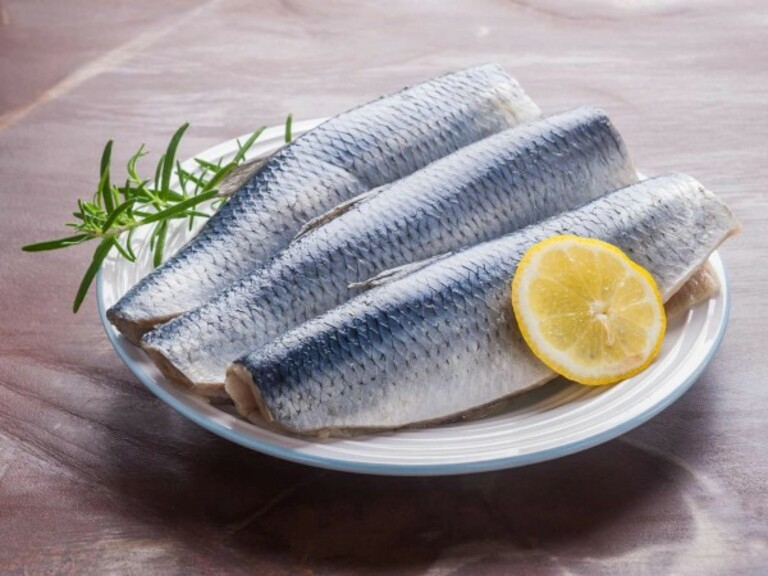
Herring 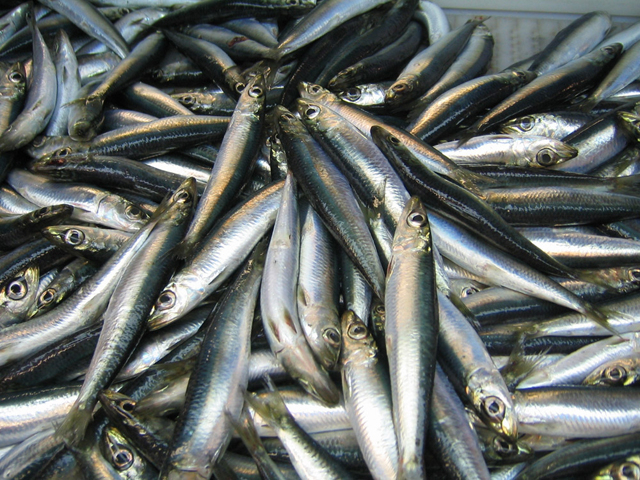
Herring -
The common names "sardine" and "pilchard" refer to a variety of tiny, oily feed fish of the Clupeidae herring family. The word "sardine", which is derived from the Italian island of Sardinia, where sardines were previously in great abundance, was first used in English in the early 15th century. Some sardines or pilchards have flesh that is a reddish-brown hue, like some types of red sardonyx or sardine stone. This term stems from the Greek word sardion, which means "red", and is possibly related to Sardis, the ancient Lydian capital located in what is now western Turkey. However, the name can refer to the ancients' familiar reddish-pink sard (or carnelian) gemstone.
One naturally occurring source of seafood that is high in omega-3 fatty acids is sardines. This fish has long, oval-shaped scales and is covered with silver. Fish meat has a distinctive flavor and is rich in protein, and omega-3 fatty acids. Due to their anti-inflammatory qualities, omega-3 fatty acids are known to help prevent heart disease in addition to having numerous other health advantages. One of the best natural sources of omega-3 fatty acids, which have been linked to a number of health advantages including decreasing blood pressure, preventing blood clots, and increasing heart health, is sardines.
Additionally a great source of vitamin B-12, is sardines. This vitamin helps the body produce energy and enhance the cardiovascular system. Sardines also include a healthy amount of vitamin D and B-12, both of which are crucial for bone health. Because of their rich nutritional makeup, sardines efficiently improve eyesight, reduce inflammation, prevent blood clotting, fight cancer, and successfully prevent heart disease. Fish that have plenty of calcium and phosphorus are healthier. Sardines are now recognized as a food that supports bone health.
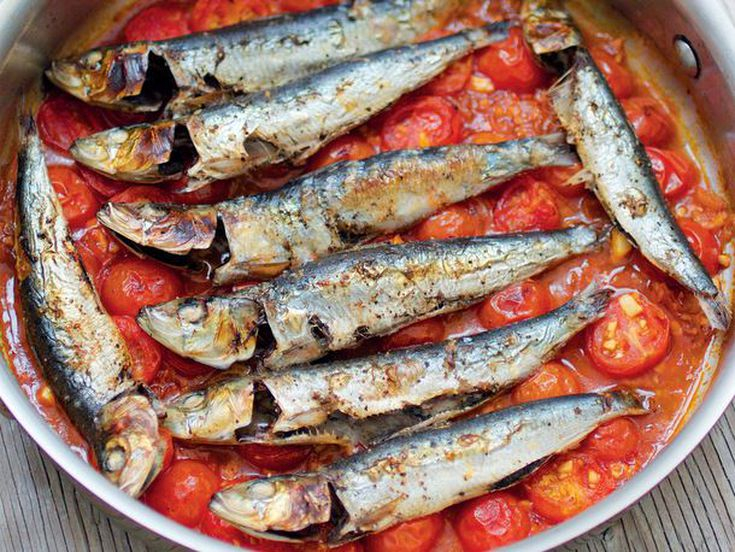
Sardines 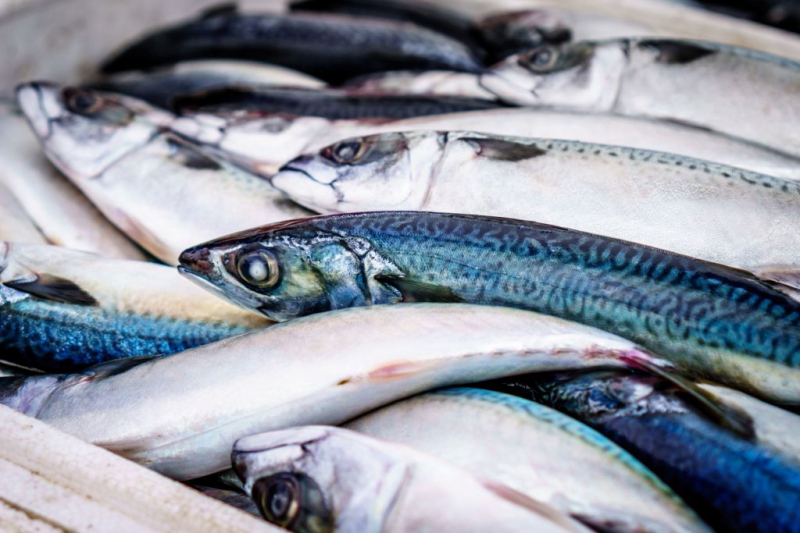
Sardines -
The common name "mackerel" is used to refer to a variety of pelagic fish species, primarily those in the Scombridae family. They are common in both temperate and tropical drinks of water, primarily inhabiting the coastal or offshore regions of the ocean. Most mackerel species have deeply forked tails and vertical stripes on their backs. Numerous species have constrained geographic ranges and inhabit distinct populations or fish stocks.
One of the marine fish with flavorful meat, numerous nutritional benefits, including protein and fat, and the top vitamins and minerals the body needs, including vitamin A, vitamin D, zinc, magnesium, and calcium, are mackerel. Mackerel includes DHA and omega-3, which are essential for the development of new brain cells and which also aid in memory improvement, concentration, alertness, and aging prevention. metabolism in older people. You can eat mackerel without worrying about digestive issues because the nutrients are quickly absorbed. Additionally, mackerel improves skin quality, lessens acne, aids in the treatment of psoriasis, and strengthens bones.
Mackerel is a wonderful food for your health and appearance and may be made into a variety of delectable dishes. Although eating too much mackerel can have negative consequences on your health, it is not recommended. It is suggested to eat 1-2 times each day, 2-3 times every week. Mackerel has a high mercury content, which makes it detrimental to your health if you consume too much of it. Because the level of mercury in fish affects both the mother's health and the development of the fetus, pregnant women should limit their consumption of mackerel.
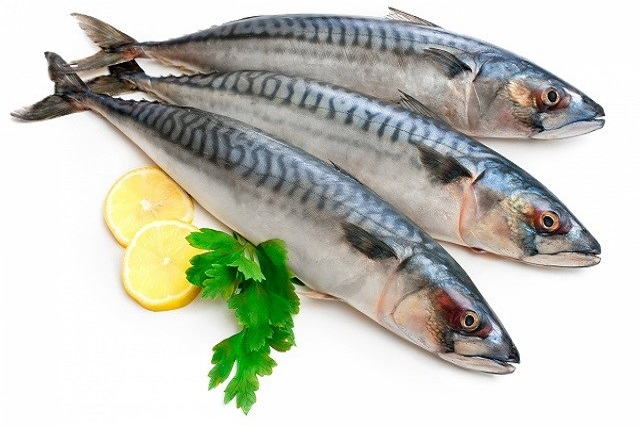
Mackerel 
Mackerel -
A fish species belonging to the Stromateidae family is the pomfret. Off the coasts of the Middle East, South Asia, and Southeast Asia, this fish can be found. This family of fish is distinguished by its members' flat bodies, forked caudal fins, and long pectoral fins. The white pomfret has a few scales and is silver or white in color. They lug around 4-6 kilograms. However, individuals weighing less than 1 kilogram are frequently found as a result of overfishing. The Indo-Pacific region values this fish for its flavor. It is frequently confused with the Gulf of Mexico coast-dwelling species Trachinotus carolinus.
These fish are distinguished by a single dorsal fin that crosses their entire body. According to a recent study, this fish includes a significant amount of omega-3 fatty acids, which are necessary for people to feed their bodies with sustenance. Calcium, vitamins A and D, and vitamin B12 are all present in high-fat pomfret. Fish, which have a high vitamin B12 content, is crucial for the nervous system. The fish oil found inside the pomfret is one of the components that help the baby's brain develop. The DHA and EPA components of omega 3 also aid in the nervous system development of young children. Additionally, the proteins in fish can speed up your body's recovery from traumas.
Pomfret is a good choice for people on diets or who wish to maintain their weight. The ingredients in this fish are devoid of calories and carbohydrates, so they won't interfere with your diet. The buildup of elevated cholesterol is caused by the consumption of specific foods high in unhealthy fats like saturated fat. Therefore, you must reduce cholesterol levels by eating meals like fish.
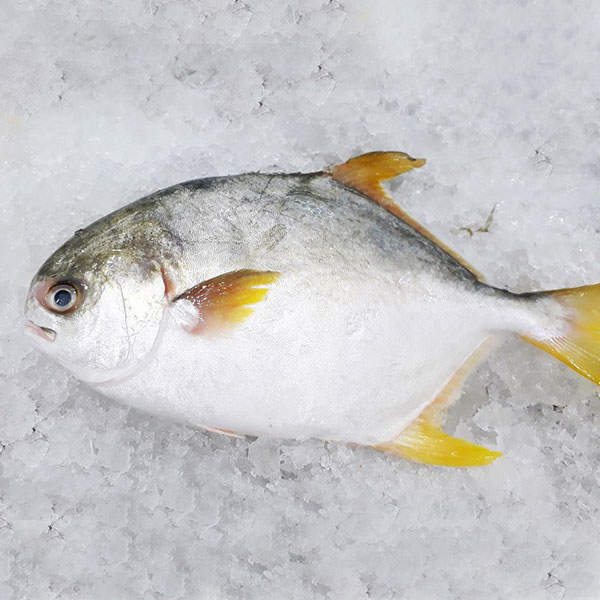
Pomfret 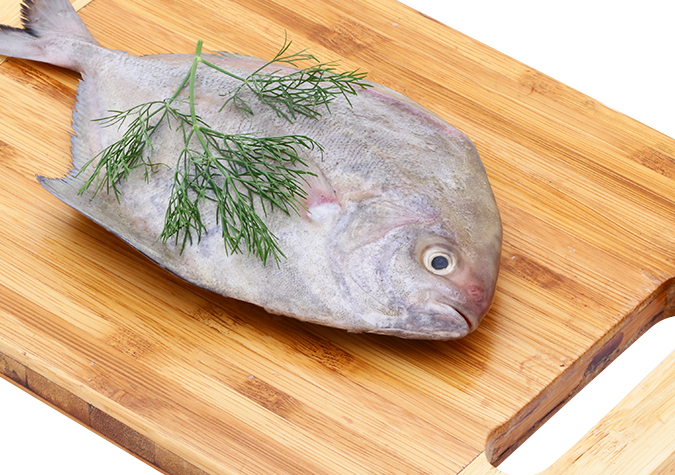
Pomfret -
Tuna is a saltwater fish that can be found in a range of habitats from the Atlantic Ocean to Indonesia. Tuna is one of the most popular seafood species on the planet. Tuna is extremely nutritious, in addition to its abundance and meaty flavor. Tuna has a lot of meat, few bones, and an appealing aroma. Tuna includes numerous nutritional components that are beneficial to human health.
Tuna is low in fat but high in protein, so eating it provides energy for the body while also lowering the risk of obesity. Furthermore, tuna can lower the number of lipids in the blood, hence reducing atherosclerosis. Tuna contains DHA, EPA, and Taurine, which can help lower blood fat levels and improve liver cell regeneration. As a result, eating tuna on a daily basis helps preserve the liver, improve its excretory function, and lower the risk of liver disease. Furthermore, tuna lowers the risk of fatty liver, which is the root cause of many liver illnesses such as decreased liver function, hepatitis...Tuna is high in iron and vitamin B12, all of which are easily absorbed by the body. human, which is a component involved in the production of red blood cells. Eating a lot of tuna lowers your chances of anemia. As a result, pregnant women and children should consume more tuna.
Although tuna has numerous health benefits, it should not be consumed in excess; 200-300g per week is acceptable, and it should be combined with a range of other meals to meet the body's nutritional requirements. As a result, while shopping for tuna, it is vital to select fresh and delicious fish and avoid purchasing rotten fish, as rotten fish contain Histidine, a substance that is very toxic and harmful to one's health.
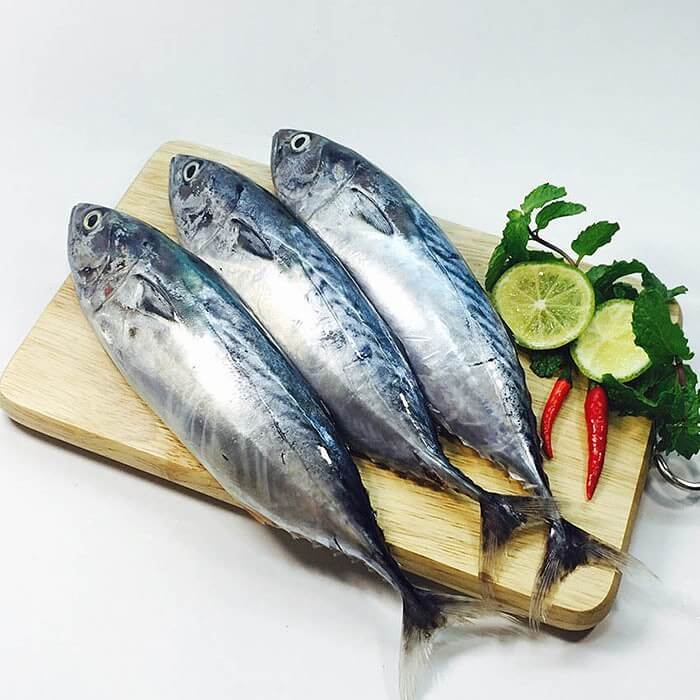
Tuna 
Tuna -
Cod is a gregarious species of marine fish in the genus Gadus that may migrate large distances to spawn and find food. Because this fish lives deep in the ocean, it is tough to exploit and catch. Cod is one of the world's most tasty fish. Cod has solid, white flesh with a faint scent that is thick and less fishy. There are many distinct species of cod, but the two most common are the Atlantic cod (Gadus morhua) and the Pacific cod (Gadus macrocephalus).
According to numerous scientific studies, the level of calcium, protein, vitamin A and vitamin D, as well as the content of Omega 3 in cod is significantly higher than that of other fish, and these nutrients are beneficial to brain development. Muscles are strengthened, degenerative joint diseases are reduced, blood pressure is regulated, and weight gain is limited. Cod is high in protein and low in fatty acids, lowering the risk of cardiovascular disease. Because cod is a lean fish, it has numerous essential elements while also being low in calories. As a result, cod can both boost health and aid in weight loss. Cod also contains a variety of minerals, including phosphorus and selenium. Phosphorus is a mineral found in bones and teeth. Meanwhile, selenium aids in the formation and protection of DNA. This fish has about 20% phosphorus and 40% adult selenium in an 85-gram serving.
Cod, like much other fish, can carry parasites, and if eaten raw, the parasites in the food can cause gastrointestinal sickness and unpleasant symptoms such as diarrhea and stomach pain as well as muscle ache. To avoid this problem, this fish must be prepared. Furthermore, consumers must purchase fresh fish that has not been dead for an extended period of time in order to safeguard their health when eating.
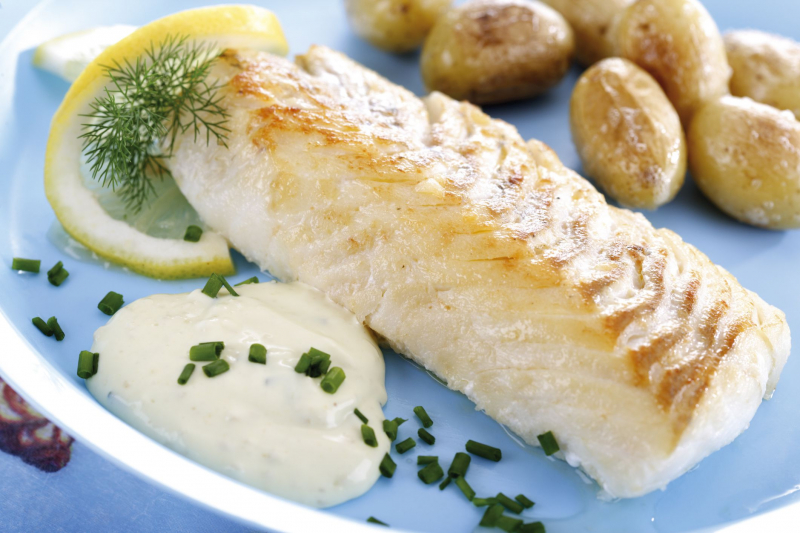
Cod 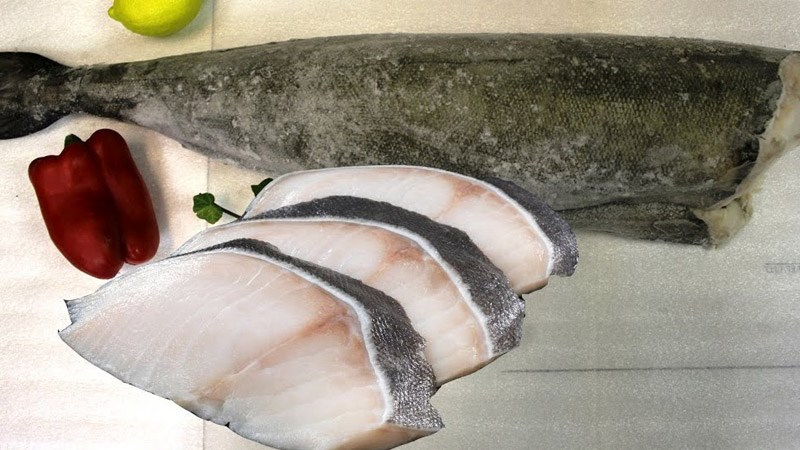
Cod -
Perch is a common name for freshwater gamefish of the genus Perca, which belongs to the family Percidae. The perch, of which three species are found in different geographical areas, is named after a major order of vertebrates known as the Perciformes. Many freshwater gamefish species resemble perch but belong to distinct genera. For example, the solely saltwater-dwelling red drum is frequently misidentified and regarded as a red perch, despite the fact that perch are freshwater fish by definition. Perch have a long and spherical body structure that lets them swim quickly in the water.
Perch is high in nutrients, vitamins, and minerals. It's high in protein, fatty acids, selenium, phosphorus, potassium, vitamin B12, niacin, vitamin B6, and pantothenic acid... These compounds are extremely beneficial to the body's growth and development. Furthermore, the protein in perch is the primary body shaper, directly associated with the growth and development of organs, cell membranes, and muscles. Eating perch will assist you in gaining weight. improve brain function Because this type of fish includes a high concentration of Omega-3 fatty acids, which improve neuronal function and have neuroprotective effects.
Because perch is high in fatty acids, consuming too much of it can be hazardous to your health and raise your risk of inflammation. Many doctors recommend limiting your consumption of tilapia if you have inflammatory disorders such as heart disease. Furthermore, because perch is omnivorous, consuming phytoplankton, aquatic organisms, aquatic plants, small invertebrates, and benthic animals, many picky eaters will occasionally skip perch as a family meal.
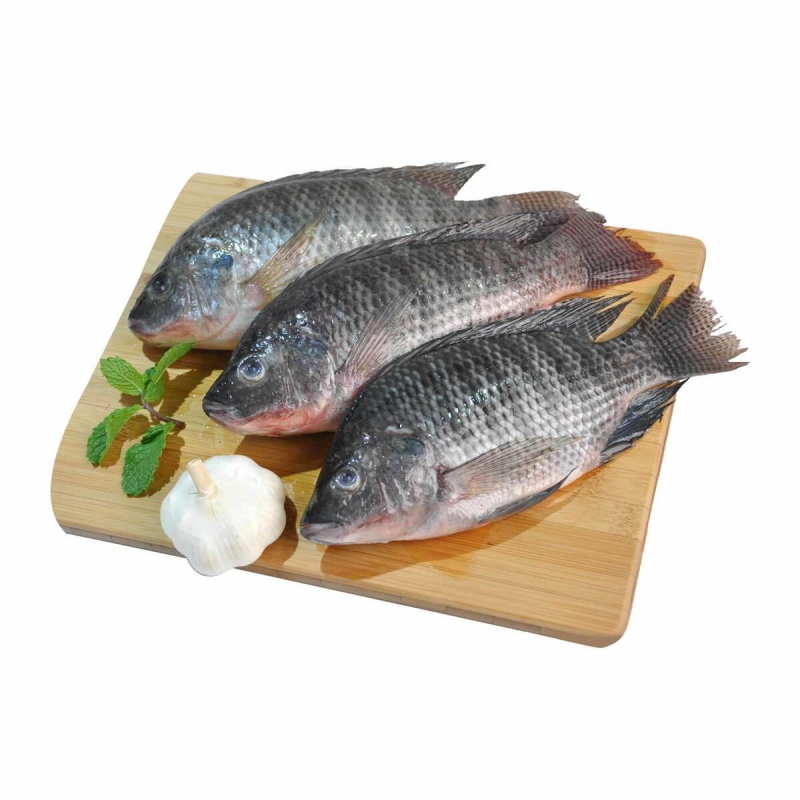
Perch 
Perch -
The striped bass is a carnivorous fish of the order Perciformes. This fish can be found in the majority of the world's oceans. Striped bass has many distinct sorts and names depending on the ocean habitat, such as black bass, Asian bass, temperate striped bass, etc. The one thing these fish have in common is that they live a long time. , and adapts quickly to most settings, even brackish water. Furthermore, they grow swiftly and deposit eggs all year. As a result, striped bass is a fish with high economic worth.
Striped bass is a low-calorie fish with high levels of selenium, protein, and omega-3 fatty acids. It lowers the risk of cardiovascular disease, high blood pressure, and high cholesterol levels. This fish also has a high vitamin A content. It is an antioxidant that has been connected to eye health and eyesight. It promotes vision and so helps to avoid free radical damage that can cause cataracts and macular degeneration. Eating striped bass on a regular basis will provide the body with the minerals, nutrients, and proteins required for weight loss.
According to the Natural Resources Defense Council, mercury discharged from industrial sites enters freshwater and sea bodies, resulting in mercury-contaminated striped bass. The ingestion of mercury into the body is a major health risk. Because mercury interferes with the proper development of the neurological system, it is especially dangerous for pregnant women and young children. Striped bass is said to be more mercury-contaminated than other fish. As a result, individuals should think carefully and choose a safe source of fish for ingestion.
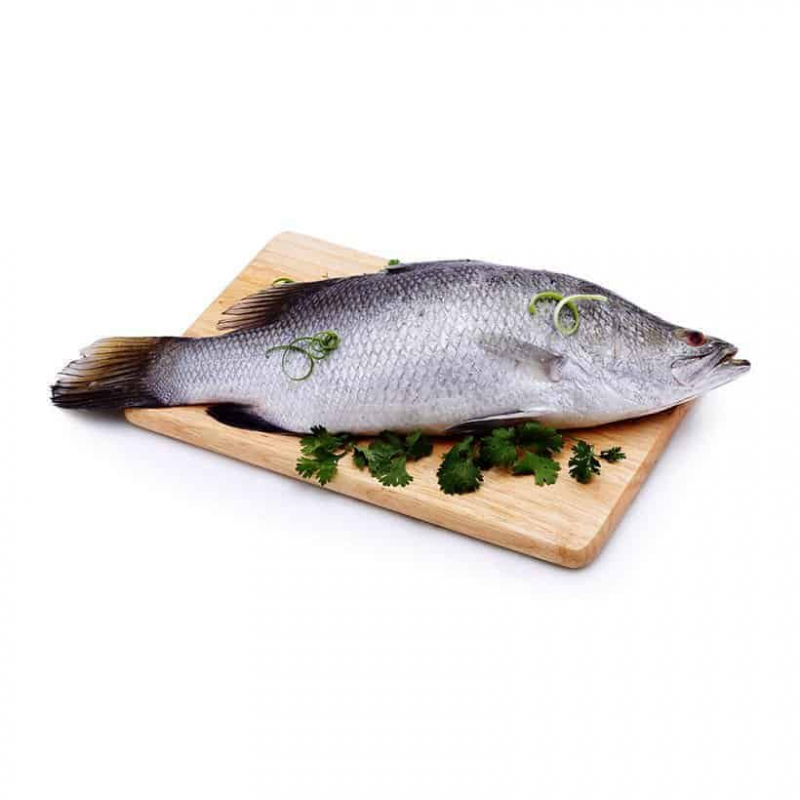
Striped Bass 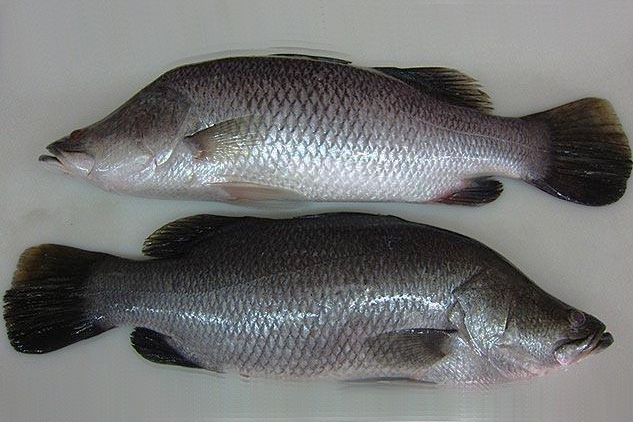
Striped Bass -
The Arctic char (Salvelinus alpinus) is a cold-water fish in the Salmonidae family that is native to alpine lakes and arctic and subarctic coastal seas. It is found in the circumpolar north. It spawns in freshwater, and populations can be lacustrine, riverine, or anadromous, returning from the ocean to spawn in their freshwater birth rivers. It is one of the rarest fish species in the United Kingdom and Ireland, found primarily in deep, cold glacial lakes, and is threatened by acidification.
The color of the flesh can range from bright red to pastel pink. Arctic char is high in omega-3 fatty acids, which are good for you. These fats are beneficial to heart health and brain development. Arctic char is also a high-protein food. Protein is required for the construction and maintenance of all bodily parts. The skin contains calcium, while the flesh is high in vitamin D. Calcium and vitamin D work together to maintain bones strong and healthy. When sunlight strikes your skin, your body may produce vitamin D; but, in the winter, when sunlight is scarce, it is critical to consume foods that contain this vitamin, such as arctic char.
Arctic char has a similar flavor and appearance to salmon, making it an excellent substitute if you can't locate wild-caught salmon in your area. Unlike many salmon, arctic char is farmed in a safe and healthy manner that prevents illness in the fish. There is no need to be concerned about environmental issues with these fish because they are grown sustainably and without harm to the fish.

Arctic char 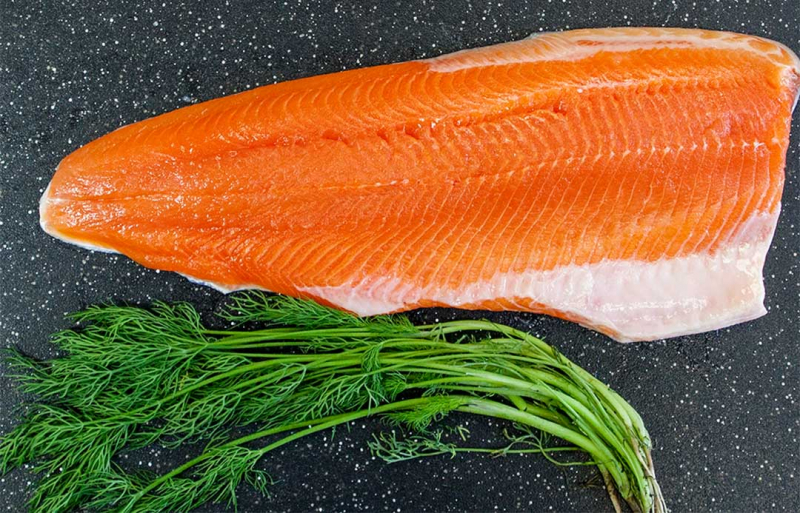
Arctic char -
Anchovy is a tiny, common forage fish of the Engraulidae family. The majority of species are found in marine waters, however, some will enter brackish water and some are restricted to fresh water in South America. Anchovies are little green fish with blue reflections due to a silver-colored longitudinal stripe running from the caudal fin's base. Almost every predatory fish in its ecosystem, including California halibut, rockfish, yellowtail, shark, chinook, and coho salmon, feed on anchovies.
Marine fish frequently contain mercury and other pollutants that are dangerous to health if consumed in big quantities. However, because anchovies have a very brief life cycle, they are regarded as clean fish with no hazardous components. Anchovies are high in vitamin A, which helps keep eyes healthy and bright and avoids eye illnesses that are common in the elderly, such as macular degeneration and cataracts. Anchovies are high in fatty acids and vitamin E, which help preserve healthy, beautiful skin. As a result, eating anchovies on a daily basis will help you maintain white, healthy, wrinkle-free skin. Eating anchovies also helps lower cholesterol in the blood, cleansing the blood and preventing cardiovascular diseases. Furthermore, the amount of unsaturated fatty acids in anchovies aids in weight loss.
Anchovies have many additional important purposes besides the ones mentioned above, such as treating insomnia, ailments or tears in the elderly, children anorexia and night sweats, and postpartum women should consume a lot of anchovies. Anchovies can be stuffed with glue, cooked in vegetable soup, or eaten with dried anchovies, both of which are quite tasty.
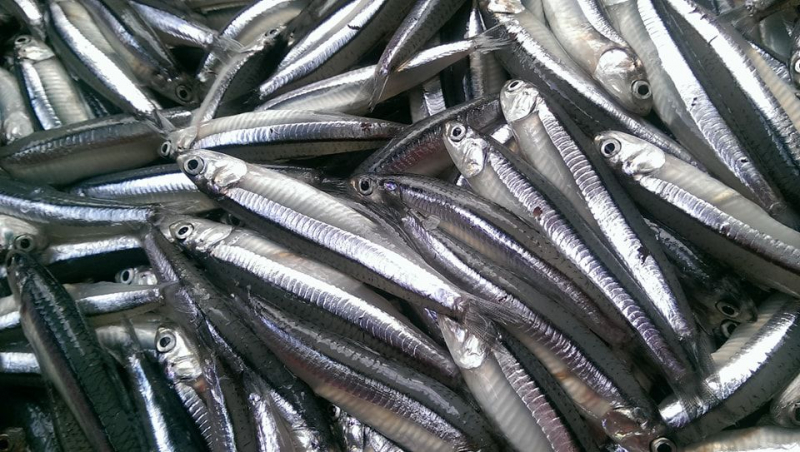
Anchovies 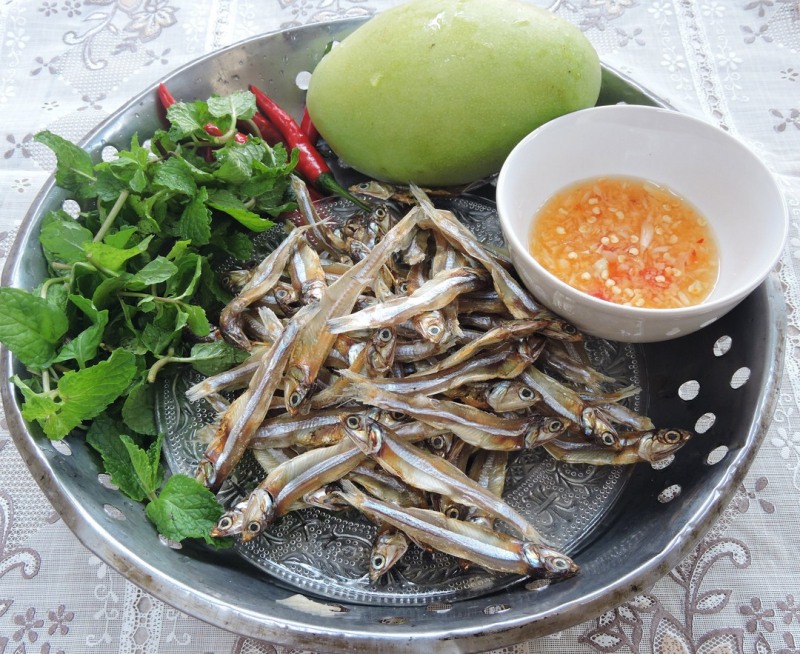
Anchovies -
Carp are several species of oily freshwater fish in the Cyprinidae family, a vast group of fish endemic to Europe and Asia. While carp is eaten in many parts of the world, it is considered an invasive species in sections of Africa, Australia, and the majority of the United States. Humans have historically relied on carp as a source of protein. Several species have been popular decorative fishes, including various goldfish breeds and the domesticated common carp variant known as koi. As a result, carp have been brought to a variety of areas, with varying degrees of success.
Carp is a fish high in minerals and vitamins, including phosphorus and vitamin B12. They are also high in healthy fatty acids, proteins, and antioxidants. Carp is high in omega-3 fats, therefore eating it protects the heart by lowering plaque deposition and the risk of atherosclerosis. At the same time, the omega-3 component of carp helps to lower blood pressure, relieve venous system tension, and lessen the risk of heart attack and stroke. Along with vitamin C, zinc is a chemical that aids in the stimulation of the immune system. Carp includes a lot of zinc, so eating it will help boost your immune system.
Carp has the effect of boosting the diuretic process, assisting the body in curing ailments while cold, normalizing milk, and cleaning the digestive tract, according to Oriental medicine. Furthermore, carp aids in the excretion and elimination of swelling and evil spirits. Not only that but carp is thought to be a cure-all for women's ailments.

Carp 
Carp -
The crucian carp (Carassius carassius) is a medium-sized carp in the Cyprinidae family. The crucian carp is a widespread European fish, with a range that extends from England to Russia. It lives in lakes, ponds, and slow-moving rivers. The crucian carp is a medium-sized cyprinid with an average length of 15 cm and a maximum weight of 3 kilos. They are described as having a "golden-green sparkling color" on their body, although a more specific source notes that immature fish are golden-bronze and darken with maturity.
The crucian carp meat is delicious and nutritious because it contains many nutrients such as protein 17.7 percent, fat 1.8 percent, and many minerals such as calcium 70mg percent, phosphorus 152mg percent, iron 0.8mg percent, and many vitamins of various types such as B1, nicotinic acid. Carp has the action of neutralizing damage, beneficial gas, diuretic... ideal for those who have been ill for a long time, the body is weak, thin and weak, blood gas, according to traditional medicine. Inadequacy leads to bad eating habits, heartburn, a bloated spleen, and difficulties urinating. Furthermore, crucian carp benefits milk, improves cardiovascular function, reduces blood viscosity, and promotes stable blood circulation.
People with liver and kidney problems, on the other hand, should avoid eating crucian carp because certain patients with stones must manage the level of uric acid in the urine because if there is, the body has too much acidification or acid excretion. Too much uric acid causes the phenomenon of uric acid combining to form stones, increasing the risk of kidney stones. As a result, if these patients desire to minimize the absorption of significant levels of purine, the simplest approach to do so is to avoid eating too much fish.

The crucian carp 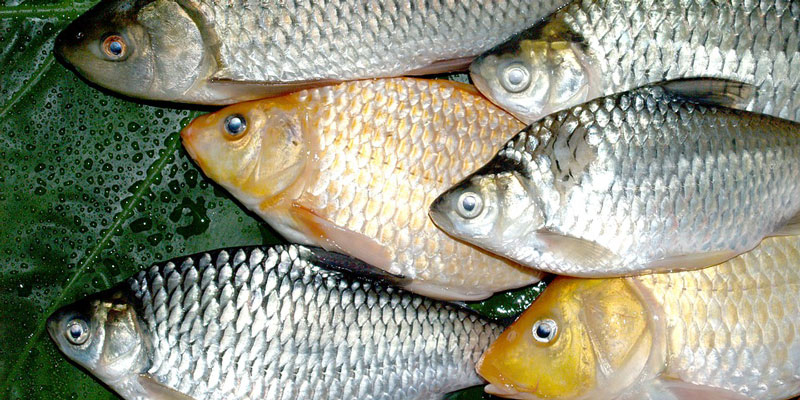
The crucian carp -
A varied category of ray-finned fish includes catfish. Catfish vary in size and habit from the three largest species currently living, the Mekong giant catfish from Southeast Asia, the wels catfish from Eurasia, and the piraba from South America. Catfish are named after their prominent barbels, which resemble a cat's whiskers. Many of the larger species of catfish are raised in pens or caught for food, which gives them significant commercial significance.
Catfish contains Omega-3 fatty acids that have the ability to protect the vision of patients with age-related macular degeneration (AMD). In addition, catfish and shellfish also contain Retinol – a form of vitamin A that helps improve night vision. Catfish as well as shellfish not only have the ability to reduce asthma symptoms in children but also prevent respiratory diseases. In addition, catfish is one of the animals that play an essential role in the prevention of depression. Many studies have clearly shown a link between low Omega-3 levels and a higher risk of depression. In addition, they can also limit emotional disorders (SAD) and postpartum depression in pregnant women.
Catfish can grow to very large sizes. So, to promote their growth, many fish farmers feed their catfish with growth hormones. These hormones are the main cause of harm to human health. Natural catfish do not eat hormones, so it is less dangerous and has more nutritional value. Therefore, if you like to eat this fish, you should buy natural catfish to eat instead of farmed catfish.
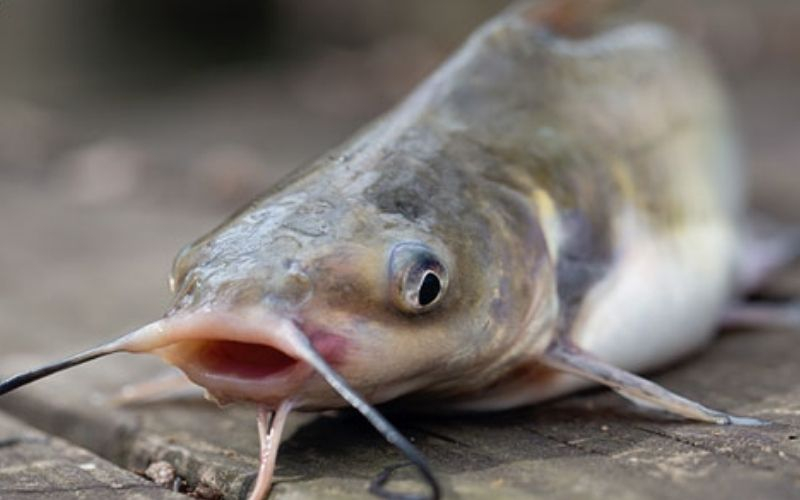
Catfish 
Catfish -
A group of flatfish species is known as flounders. Demersal fish are those that live at the bottom of oceans. Some species will also enter estuaries. Even though they are all members of the suborder Pleuronectoidei, some only loosely related species go by the moniker "flounder". A flounder changes its habits as it gets older and uses the ocean floor as camouflage to avoid being eaten by predators.
Flounders are frequently prepared as a raw fish salad because it is high in omega 3, magnesium, and protein, which help to improve blood pressure, physical appearance, and skin. The flounders have a broad faces, dark brown skin, and left-facing eyes. Fish is typically processed into dishes like raw fish salad or fried fish since the meat is tender, low in fat and calories, and easy to digest. Flounders have a great flavor and quality between 30 to 40 days of hatching.
One of the most popular low-fat fish around the world is flounder. Omega-3 fatty acids found in flounders prevent genes from activating cells that promote obesity. This fish's abundance of protein, unsaturated fats, minerals, and vitamins helps to correct any nutritional imbalances brought on by the diet. Peptides are created when the proteins in the flounders break down. The angiotensin-converting enzyme, which raises blood pressure, is blocked by peptides. The omega-3s previously mentioned help lower blood cholesterol, enhance blood vessel health, and guard against artery hardening and strokes. Phosphorus, magnesium, and B vitamins are abundant in this fish. Magnesium contributes to the reduction of muscle cramps and stiffness, helps regulate blood pressure and blood sugar, enables the creation of energy, and reduces the risk of stroke.
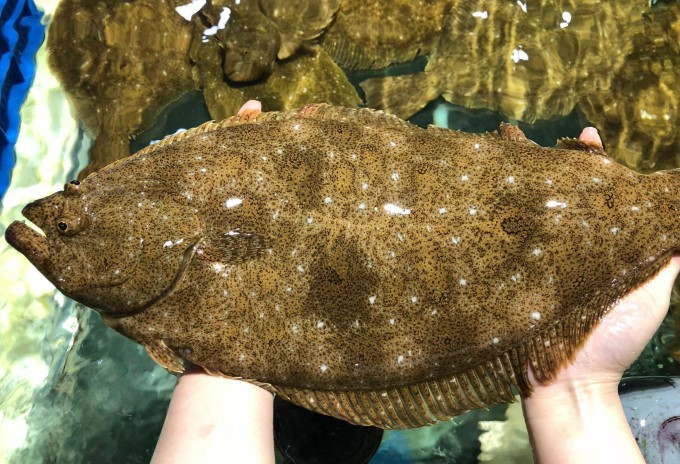
Flounders 
Flounders



















